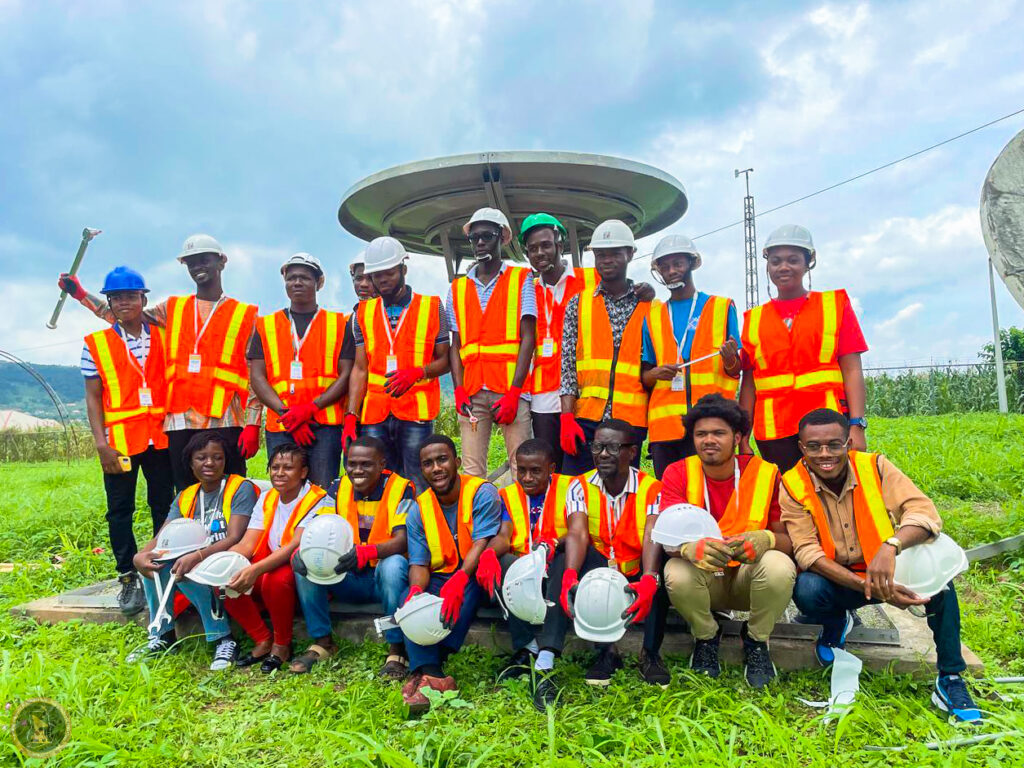AstroPhy Ghana 2023 was a one-week, residential radio astronomy training school in Ghana. It focused on Astronomy Instrumentation and Observations Techniques targeting undergraduate and graduate university students. Its objective was to equip students with skills in Python programming, astronomical technical instrumentation, data reduction, analysis, and observational techniques.
The primary aim of AstroPhy was to introduce students from diverse fields such as physics, engineering, computer science, and related disciplines to the process of building a Table Top Radio Telescope (TTRT). Eight participants from various universities (four females and four males) gained hands-on experience in observational techniques. To observe galactic HI emissions, the TTRT was constructed using a software-defined radio as the receiver, an amplifier, and a Cantenna horn as the antenna. Students were responsible for constructing their own radio frequency (RF) probe and antenna connector, assembling RF components, and using these settings for data collection with Python programming. Additionally, students engaged in various other astronomical instrumentation activities, including testing and analyzing Radio Frequency Interference (RFI) at the training venue, measuring signal-to-power loss with a signal generator and spectrum analyzer, and assembling a small parabolic dish antenna.
Despite the program’s brief duration, students left with a strong foundation in astronomy and the ability to work with basic instruments and components used in the field, with a keen enthusiasm to pursue careers in astronomy and space science-related fields.
Activities:
1.Training of 20 University graduate and undergraduate with python basic training, data collections and analysis,
2.Testing of Radio Frequency Interference (RFI) and analysis, Signal to power loss measurement.
3.Setting up of the Table Top Radio Telescope (TTRT)
4.Observation of the Galactic HI with the TTRT
5. Analysis of the galactic HI data using the python programming skills
6. Presentations of the observational results
7. Assembling of a small parabolic dish antenna
The project implemented various evaluation methods and have ongoing assessment plans.
- Interviews After the Training Program: one-on-one interviews with project participants after the training program to gather qualitative insights into their experiences, challenges, and achievements. These interviews provided valuable feedback, demonstrating that all 20 participants greatly benefited from the hands-on practical experiments during the training program.
- Evaluation Forms: Feedback evaluation forms were distributed to participants, allowing them to provide feedback on various project aspects, including content, delivery, and overall satisfaction. This quantitative data helped pinpoint areas for improvement and assess the impact of this training program.
- Python Assignments: Participants were assigned python scripts after the programming lectures to assess their understanding. All 20 participants, divided into four groups, successfully applied their python programming knowledge to problem-solving.
- Tabletop Radio Telescope Data Analysis and Reduction Project: Participants, organized into working groups, assembled the TTRT electronics, collected Galactic HI data, and performed the analysis. The groups presented their final results at the end of the program. This hands-on project served as a practical learning opportunity and an evaluation tool, assessing participants’ skills in astronomy data analysis and their ability to apply theoretical knowledge.
- Post-Program Google Meet: We organised a post-program Google Meet session, enabling participants to provide real-time feedback and share their thoughts and improvement suggestions.

